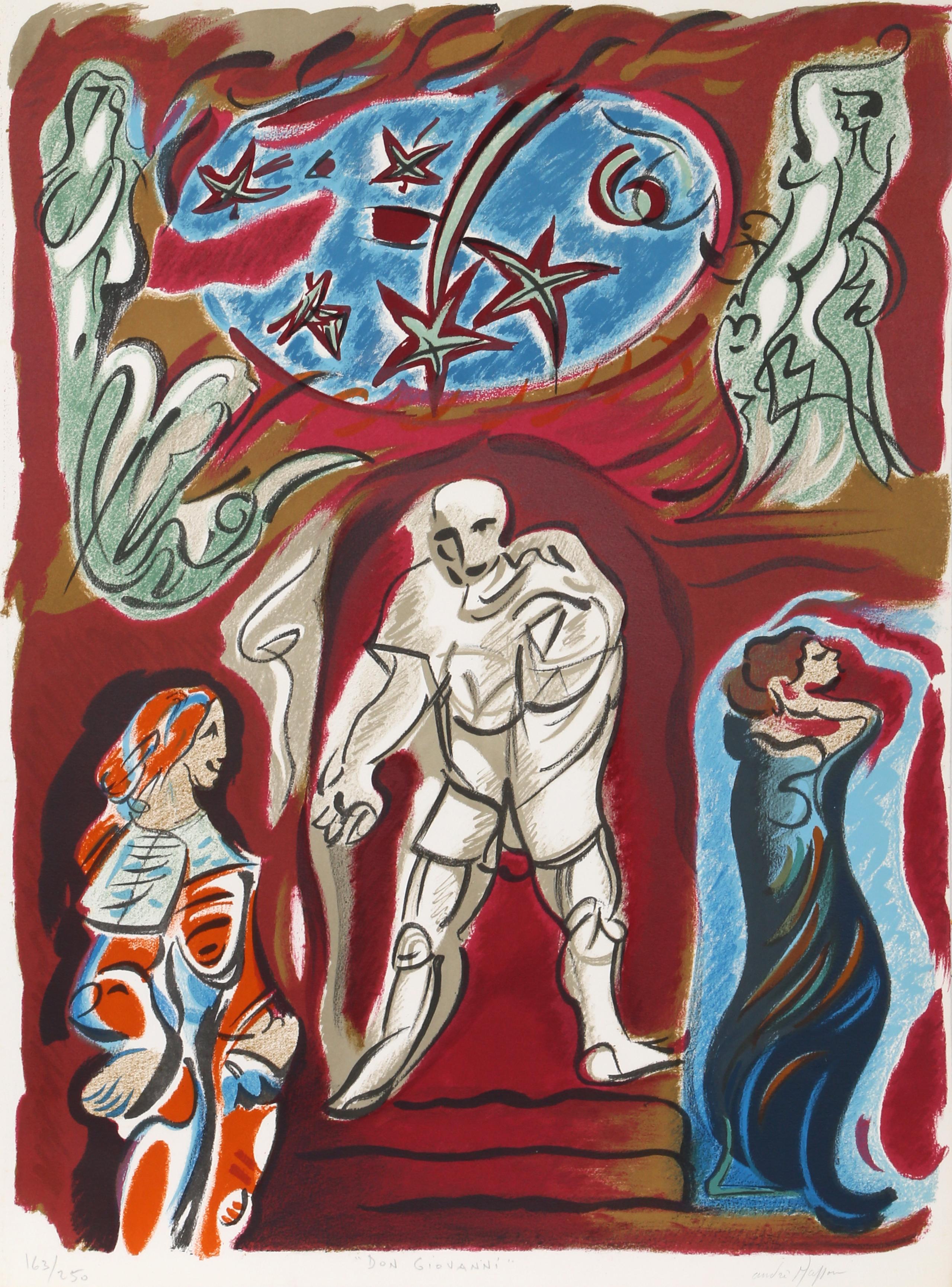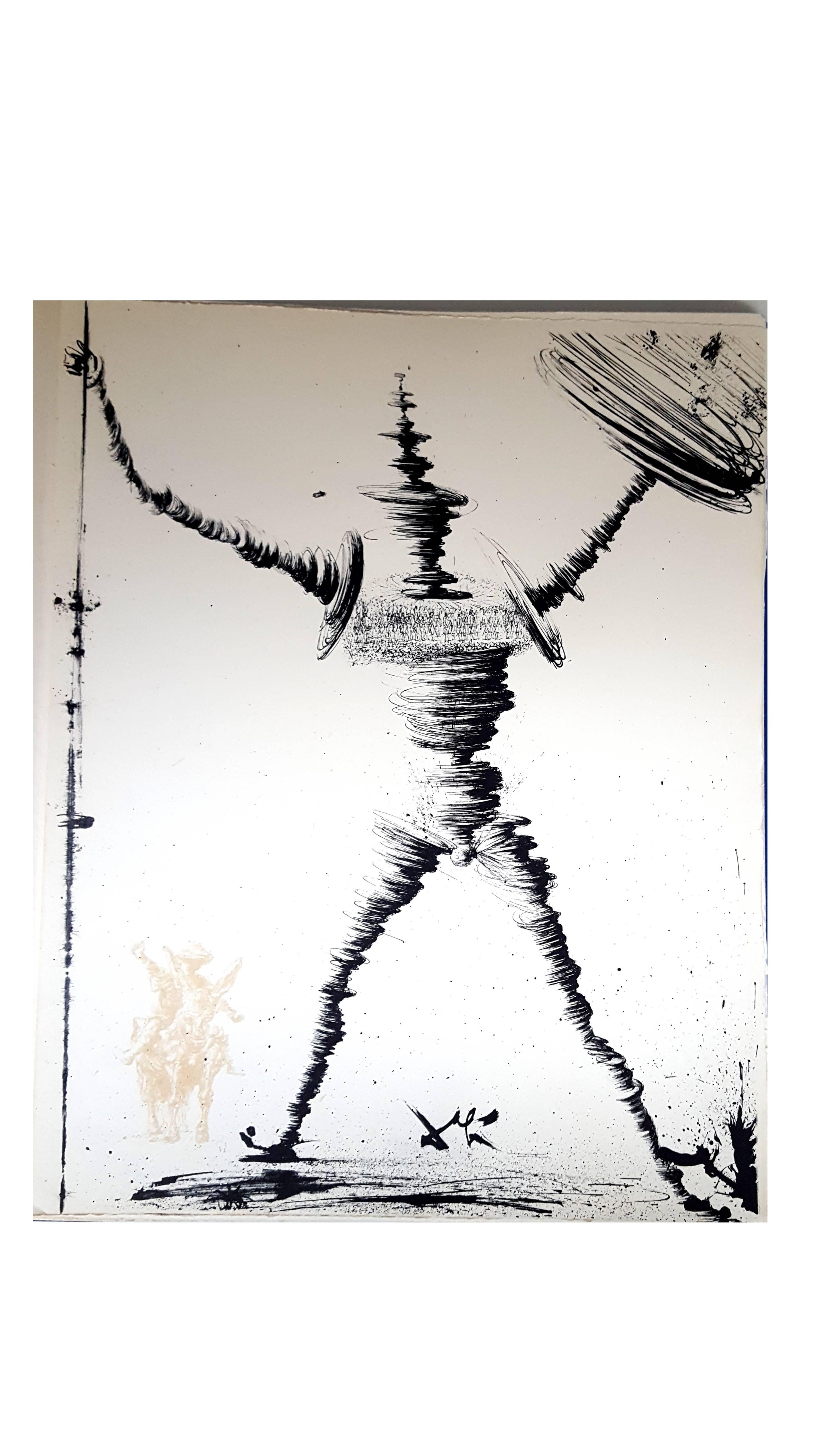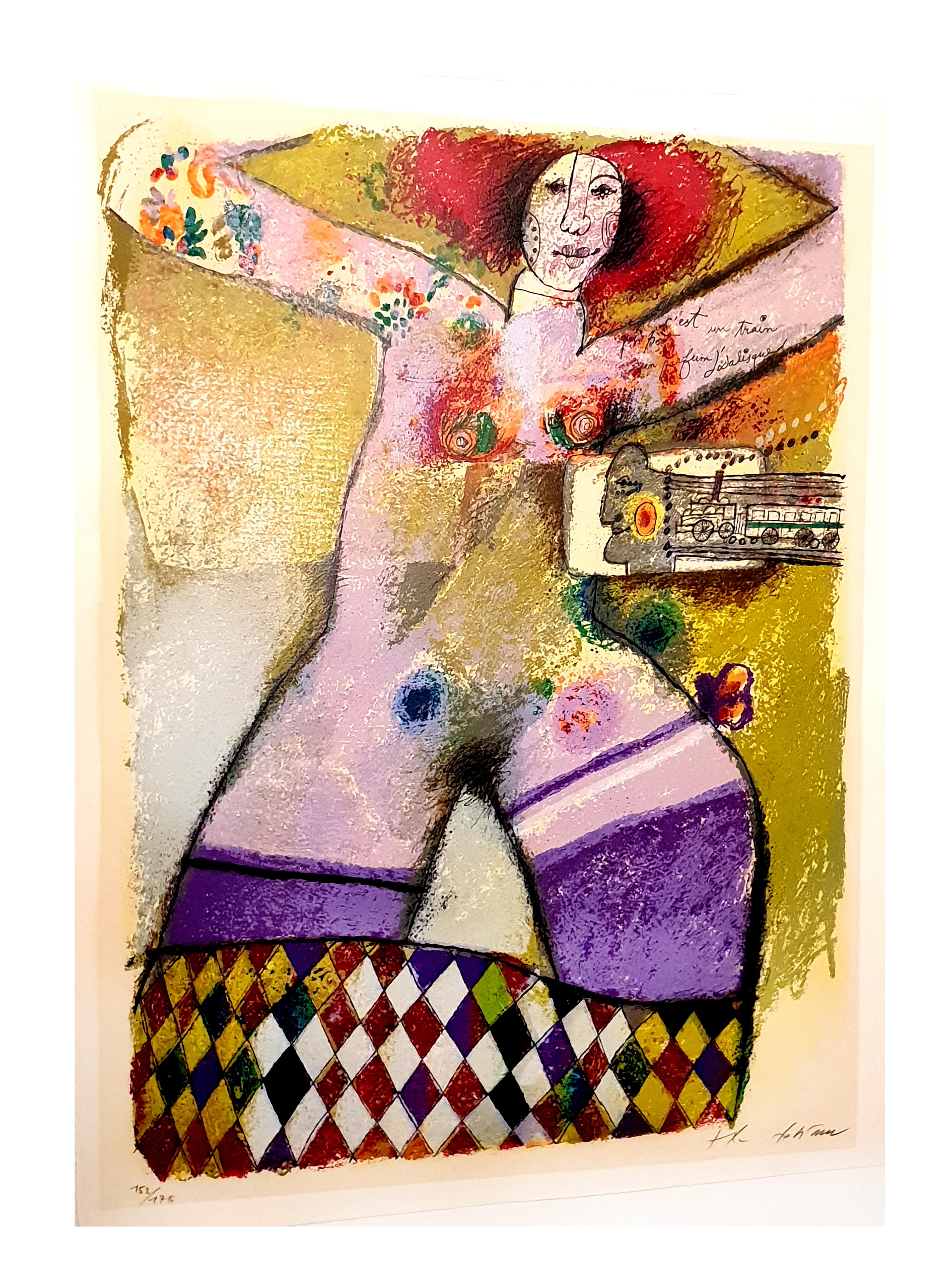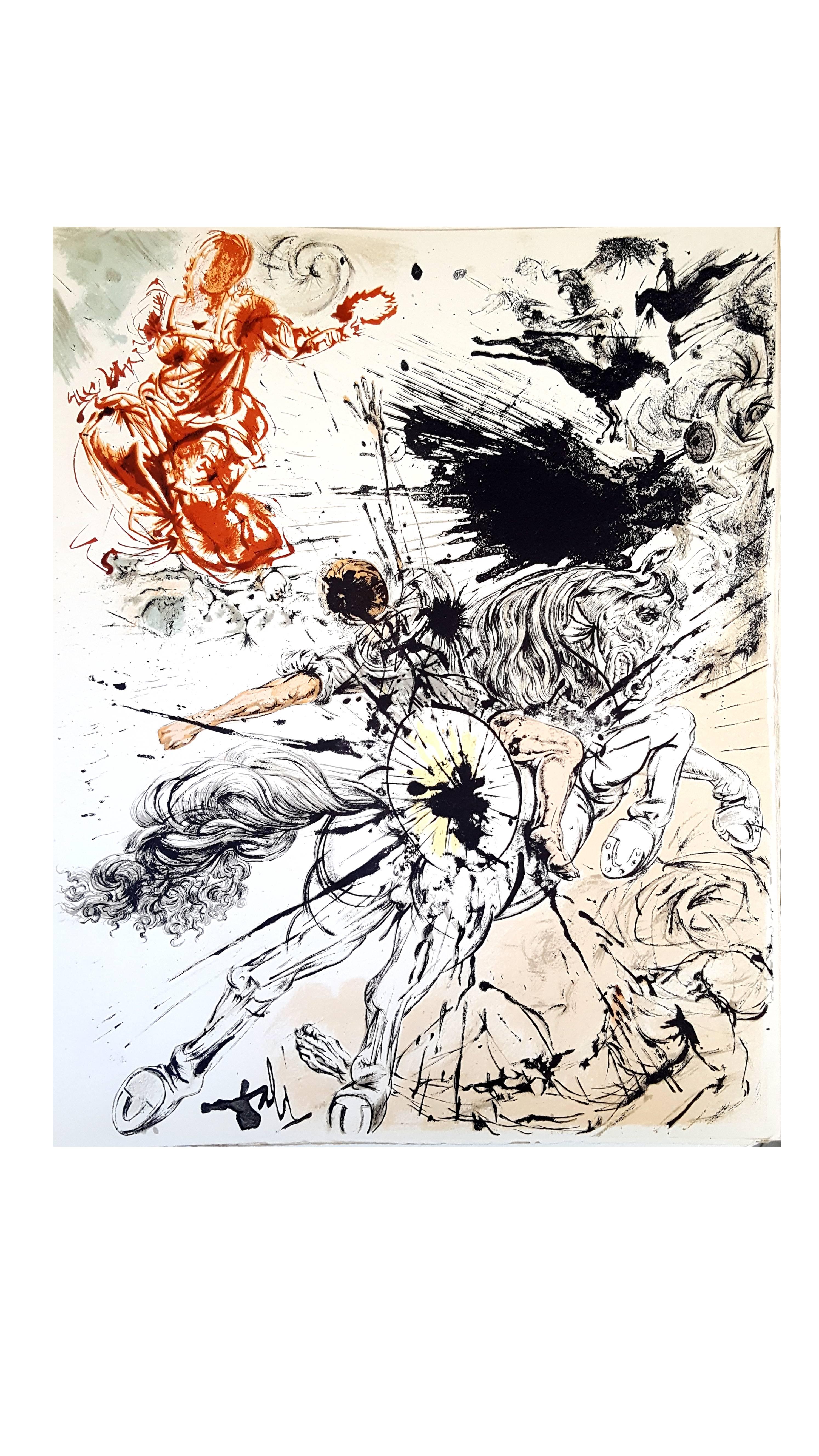Items Similar to Flute Player - Lithograph - After PABLO PICASSO
Want more images or videos?
Request additional images or videos from the seller
1 of 12
Flute Player - Lithograph - After PABLO PICASSO1959
1959
About the Item
After PABLO PICASSO (1881-1973)
Flute Player
Dimensions: 56 x 38 cm
Signed and dated in the plate
Posthumous edition by Edition Succession Picasso, Paris.
Editions de la Paix
Picasso is not just a man and his work. Picasso is always a legend, indeed almost a myth. In the public view he has long since been the personification of genius in modern art. Picasso is an idol, one of those rare creatures who act as crucibles in which the diverse and often chaotic phenomena of culture are focused, who seem to body forth the artistic life of their age in one person. The same thing happens in politics, science, sport. And it happens in art.
Early life
Born in Malaga, Spain, in October of 1881, he was the first child born in the family. His father worked as an artist, and was also a professor at the school of fine arts; he also worked as a curator for the museum in Malaga. Pablo Picasso studied under his father for one year, then went to the Academy of Arts for one year, prior to moving to Paris. In 1901 he went to Paris, which he found as the ideal place to practice new styles, and experiment with a variety of art forms. It was during these initial visits, which he began his work in surrealism and cubism style, which he was the founder of, and created many distinct pieces which were influenced by these art forms.
Updates in style
During his stay in Paris, Pablo Picasso was constantly updating his style; he did work from the blue period, the rose period, African influenced style, to cubism, surrealism, and realism. Not only did he master these styles, he was a pioneer in each of these movements, and influenced the styles to follow throughout the 20th century, from the initial works he created. In addition to the styles he introduced to the art world, he also worked through the many different styles which appeared, while working in Paris. Not only did he continually improve his style, and the works he created, he is well known because of the fact that he had the ability to create in any style which was prominent during the time.
Russian ballet
In 1917, Pablo Picasso joined the Russian Ballet, which toured in Rome; during this time he met Olga Khoklova, who was a ballerina; the couple eventually wed in 1918, upon returning to Paris. The couple eventually separated in 1935; Olga came from nobility, and an upper class lifestyle, while Pablo Picasso led a bohemian lifestyle, which conflicted. Although the couple separated, they remained officially married, until Olga's death, in 1954. In addition to works he created of Olga, many of his later pieces also took a centralized focus on his two other love interests, Marie Theresa Walter and Dora Maar. Pablo Picasso remarried Jacqueline Roque in 1961; the couple remained married until his death 12 years later, in 1973.
Work as a pacifist
Pablo Picasso was a pacifist, and large scale paintings he created, showcased this cry for peace, and change during the time. A 1937 piece he created, after the German bombing of Guernica, was one such influential piece of the time. Not only did this become his most famous piece of art work, but the piece which showed the brutality of war, and death, also made him a prominent political figure of the time. To sell his work, and the message he believed in, art, politics, and eccentricity, were among his main selling points.
Conflicting with social views
Many things Pablo Picasso did during the 1950s, conflicted with the general public. Viciousness towards his children, exaggerated virility towards women, and joining the Communist party, were some of the many scandals which he was involved in during his lifetime. Although most of the things he did were viewed negatively by a minority of the general public, admirers of Pablo Picasso turned a blind eye, and still accepted him as a prominent figure in their society. Following the end of WWII, Pablo Picasso turned back towards his classic style of work, and he created the "Dove of Peace." Even though he became a member of the Communist party, and supported Stalin and his political views and rule, Pablo Picasso could do no wrong. In the eyes of his admirers and supporters, he was still a prominent figure, and one which they would follow, regardless of what wrongs he did. He was not only an influence because of the works he created, but he was also an influential figure in the political realm.
Influence outside of art
Although Pablo Picasso is mainly known for his influence to the art world, he was an extremely prominent figure during his time, and to the 20th century in general. He spread his influences to the art world, but also to many aspects of the cultural realm of life as well. He played several roles in film, where he always portrayed himself; he also followed a bohemian lifestyle, and seemed to take liberties as he chose, even during the later stages of his life. He even died in style, while hosting a dinner party in his home.
Collection of work
Pablo Picasso is recognized as the world's most prolific painter. His career spanned over a 78 year period, in which he created: 13,500 paintings, 100,000 prints and engravings, and 34,000 illustrations which were used in books. He also produced 300 sculptures and ceramic pieces during this expansive career. It is also estimated that over 350 pieces which he created during his career, have been stolen; this is a figure that is far higher than any other artist throughout history.
Sale of his works
Pablo Picasso has also sold more pieces, and his works have brought in higher profit margins, than any other artist of his time. His pieces rank among the most expensive art works to be created; with a price tag of $104 million, Garson a la Pipe, was sold in 2004.
Although he had a conflicting lifestyle, Pablo Picasso was admired by many, and was one of the most influential figures of his time. Not only during his life, but also after his death, he is still one of the most well known artists, and political figures, of his time. With thousands of pieces to his name, and art works which have been seen by millions, around the world, he has been a great influence to society, he has influenced the art world, and he introduced many new styles of art, which helped shape modern art, and modern styles artists follow today.
- Creation Year:1959
- Dimensions:Height: 22.05 in (56 cm)Width: 14.97 in (38 cm)Depth: 0.04 in (1 mm)
- Medium:
- Movement & Style:
- After:Pablo Picasso (1881-1973, Spanish)
- Period:
- Condition:
- Gallery Location:Collonge Bellerive, Geneve, CH
- Reference Number:1stDibs: LU161214217762
About the Seller
4.9
Gold Seller
These expertly vetted sellers are highly rated and consistently exceed customer expectations.
Established in 2015
1stDibs seller since 2015
910 sales on 1stDibs
Typical response time: 2 hours
- ShippingRetrieving quote...Ships From: Collonge Bellerive, Geneve, Switzerland
- Return PolicyA return for this item may be initiated within 7 days of delivery.
More From This SellerView All
- Salvador Dali - Don QuichotteBy Salvador DalíLocated in Collonge Bellerive, Geneve, CHSalvador Dali - Don Quichotte - Original Lithograph Joseph FORET, Paris, 1957 PRINTER : Atelier Mourlot. SIGNATURE : printed signature in the plate LIMI...Category
1950s Surrealist Figurative Prints
MaterialsLithograph
- Théo Tobiasse - Jerusalem Inside - Original Lithograph with CollageBy Théo TobiasseLocated in Collonge Bellerive, Geneve, CHThéo Tobiasse Title: Jerusalem roule le long de ma gorge Signed and Numbered Dimensions: 57 x 76 cm Information : Edition of 175 Condition : ExcellentCategory
1980s Surrealist Figurative Prints
MaterialsLithograph
- Théo Tobiasse - A train - Original LithographBy Théo TobiasseLocated in Collonge Bellerive, Geneve, CHThéo Tobiasse Title: C'est un train portant un parfum d'odalisque Signed and Numbered Dimensions: 57 x 76 cm Information : Edition of 175 Condition : E...Category
1980s Surrealist Figurative Prints
MaterialsLithograph
- Salvador Dali - Apparition de Dulcinée - Original LithographBy Salvador DalíLocated in Collonge Bellerive, Geneve, CHSalvador Dali - Apparition de Dulcinée - Original Lithograph Joseph FORET, Paris, 1957 SIGNATURE : printed in the image LIMITED : 197 copies. SIZE : 41 x 33 cm REFERENCES : Field 57...Category
1950s Surrealist Figurative Prints
MaterialsLithograph
- Théo Tobiasse - A Man Talking About Mornings - Original LithographBy Théo TobiasseLocated in Collonge Bellerive, Geneve, CHThéo Tobiasse Title: Un Homme Raconte les Matins Signed and Numbered Dimensions: 57 x 76 cm Information : Edition of 175 Condition : ExcellentCategory
1980s Surrealist Figurative Prints
MaterialsLithograph
- Théo Tobiasse - Abraham Sacrifice - Original Lithograph with collageBy Théo TobiasseLocated in Collonge Bellerive, Geneve, CHThéo Tobiasse Title: Le Sacrifice d'Abraham Signed and Numbered Dimensions: 57 x 76 cm Information : Edition of 175 Condition : ExcellentCategory
1980s Surrealist Figurative Prints
MaterialsLithograph
You May Also Like
- Visage, Surreal Lithograph by Andre MassonBy André MassonLocated in Long Island City, NYArtist: Andre Masson, French (1896 - 1987) Title: Visage Year: circa 1960 Medium: Lithograph on Arches, Signed and numbered in pencil Edition: 97/200 Size: 30 in. x 22 in. (76.2 cm x...Category
1960s Surrealist Figurative Prints
MaterialsLithograph
- Don Giovanni, Surreal Lithograph by Andre MassonBy André MassonLocated in Long Island City, NYArtist: Andre Masson, French (1896 - 1987) Title: Don Giovanni Year: 1978 Medium: Lithograph on Arches, Signed and numbered in pencil Edition: 163/250 Size: 30 in. x 22 in. (76.2 cm ...Category
1970s Surrealist Figurative Prints
MaterialsLithograph
- PRINCE OF CUPS 1979, Signed Lithograph on Arches, Tarot Card SeriesBy Salvador DalíLocated in Union City, NJArtist - Salvador Dali (Spanish, 1904-1989) Title - PRINCE OF CUPS, Tarot Card Series Publisher - DALART N.V. Year published - 1979 Medium - Lithograph on Arches Cover 270 gsm. 100% acid free, signed in pencil, inscribed 2/5 PP (Printers Proof) by Salvador Dali on lower print margin, publishers mark "DALART N.V. Copyright 1979" blindstamp embossed on lower left print margin. Fine impression, vivid colors, unframed, in very good condition. Listed in the Albert Field's OFFICIAL CATALOGUE OF THE GRAPHIC WORKS OF SALVADOR DALI, Reference #79-15. PRINCE OF CUPS from the Tarot Series 1979, is a surrealist style limited edition lithograph by Salvador Dalí (1904 – 1989) Printed on archival Arches paper, 100% acid free. PRINCE OF CUPS depicts a freely drawn, black line portrait of a young Prince wearing his golden yellow crown, sporting a white ruffle collared shirt, looking slightly sideways posed behind a golden chalice...Category
1970s Surrealist Portrait Prints
MaterialsLithograph
- Mysterious Table - Lithograph by Roger Chapelain-Midy - 1973Located in Roma, ITMysterious Table is a colored lithograph realized by the artist Roger Chapelain-Midy in 1973. Certificate label on the rear. Numbered, Edition 9/100. Original print in good conditi...Category
1970s Surrealist Figurative Prints
MaterialsLithograph
- Mysterious Interior - Lithograph by Roger Chapelain-Midy - 1973Located in Roma, ITMysterious Interior is a colored lithograph realized by the artist Roger Chapelain-Midy in 1973. Hand-signed by the artist on the lower right. Numbered on the lower left. Edition 80...Category
1970s Surrealist Figurative Prints
MaterialsLithograph
- Art Deco - Surreal Baby Among the Stars in a TheaterBy Nura UlreichLocated in Miami, FLIn most of Nora's work, she combines realism and fantasy. Here, the viewer's position is the back of a theater. In front, there are four raised hands, cheering a monumental image of a sleeping wrapped infant resting on a crescent moon and surrounded by two stars. The infant is floating above the seats and centered in the middle theater curtain...Category
1920s Surrealist Figurative Prints
MaterialsMonotype, Lithograph
Recently Viewed
View AllMore Ways To Browse
Vintage Flutes Flutes
Fluted Back
Vintage Players
Blue Fluted
Modern Vintage Player
Plays The Flute
The Wrong Man
Picasso Paintings For Sale
Vintage Dior Tags
Ballerina Figure
Guernica Picasso
Pablo Picasso Couple
Picasso Peace
Vintage Ballerina Print
Vintage Ballerina Prints
Communist Russia
Spanish Nobility
Ballet Ballerina Painting





